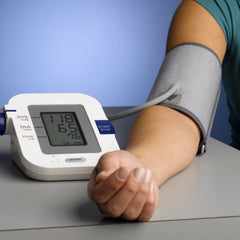Brisk Walking: The Best Exercise for Reducing the Risk of Multiple Diseases
Table of Contents:
- Brisk Walking Lowers the Risk of Heart Disease
- Brisk Walking Is the Ideal Exercise for Middle-Aged and Older Adults
- The Many Benefits of Walking Faster
- Follow These 3 Tips to Maximize the Benefits of Brisk Walking
- Increase Stride Length and Step Frequency
- Maintain Proper Upper Body Posture and Arm Movement
- Monitor Heart Rate and Physical Sensations
- FAQs about Brisk Walking
Is daily walking not delivering the health benefits you expected? Many people believe that simply walking more will lead to better health. However, one crucial factor is often overlooked—walking speed.
Recent research shows that changing just howyou walk can make a major difference. Walking briskly, as opposed to just increasing your step count, can lower the risk of hypertension, high blood sugar, and high cholesterol, reduce inflammation, and even extend your lifespan. In short, it’s not about walking more, but walking faster.

Brisk Walking Lowers the Risk of Heart Disease
In April 2025, researchers from the University of Glasgow published a study in *Heart*, the official journal of the British Cardiovascular Society. The study found that compared to slow walking, walking at a moderate or brisk pace significantly reduced the risk of various heart rhythm disorders, such as atrial fibrillation, bradycardia, and ventricular arrhythmias.
Participants were divided into three groups based on their walking pace:
- Slow walkers: less than 4.8 km/h (3 mph)
- Moderate walkers: 4.8–6.4 km/h (3–4 mph)
- Brisk walkers: over 6.4 km/h (4 mph)
Compared with slow walkers, those in the moderate group had a 35% lower risk of arrhythmias, while brisk walkers had a 43% reduced risk.
Further analysis revealed that 36% of the link between walking speed and reduced arrhythmia risk could be attributed to improvements in metabolic and inflammatory markers. In essence, faster walking leads to lower risks of obesity and inflammation, which in turn reduces heart rhythm problems.
The protective effect was especially prominent among women, individuals under 60, those with a BMI under 30, and people with two or more chronic conditions.
In summary, a faster walking pace is consistently linked to lower arrhythmia risk, and the benefits are even more pronounced in high-risk populations.
Brisk Walking Is the Ideal Exercise for Middle-Aged and Older Adults
For older adults, brisk walking is one of the most effective and accessible forms of exercise. While people in their 30s may aim for 10,000 steps per day, this may be excessive for individuals in their 50s or 60s. Even if it doesn’t feel tiring, joints may experience wear and tear over time, potentially leading to long-term damage.
Experts recommend walking 6,000 to 7,000 steps daily at alternating paces—sometimes brisk, sometimes moderate. Adding gentle arm swings, chest-expanding movements, or waist twists during walking can enhance the benefits. However, avoid multitasking or deep thinking while walking, as mental distractions can reduce the effectiveness of the workout. To gain full health benefits, it’s essential to stay mentally present during exercise.
The Many Benefits of Walking Faster
Brisk Walking Slows Aging
A 2022 study published in *Communications Biologyfound that middle-aged individuals who consistently walk at a fast pace can appear biologically up to 16 years younger than those who walk slowly. This effect was linked to longer telomeres, which are protective caps on chromosomes associated with slower cellular aging.
Brisk Walking Helps Prevent Cancer
A 2023 study in the *British Journal of Sports Medicineconcluded that even moderate levels of physical activity can significantly reduce the risk of early death. Specifically, just 11 minutes of brisk walking per day can lower the risks of heart disease, stroke, and various cancers.
Brisk Walking Extends Lifespan
A 2025 study published in *Journal of Exercise and Health Sciencefound that even a modest increase in brisk walking time can extend life expectancy. For women who were previously inactive, adding 10 or 30 minutes of brisk walking daily extended life expectancy by 0.9 and 1.4 years, respectively. For similarly inactive men, the gains were even greater—1.4 and 2.5 years, respectively.
Follow These 3 Tips to Maximize the Benefits of Brisk Walking
Brisk walking is a highly cost-effective exercise, especially for those who lack a regular workout routine or find high-intensity training difficult to maintain. To walk briskly and effectively—for fat loss, cardiovascular health, or fitness—keep these three tips in mind:
Increase Stride Length and Step Frequency
To achieve a brisk pace, take longer strides and walk faster. Aim for a step rate of 120 to 135 steps per minute for optimal results.
Maintain Proper Upper Body Posture and Arm Movement
Good walking form is essential. Relax your shoulders, keep your back straight, engage your core, and swing your arms naturally. Arm movement helps maintain balance, especially at higher speeds.
Monitor Heart Rate and Physical Sensations
Aim to keep your heart rate within 60% to 75% of your maximum heart rate during brisk walking. You should feel slightly breathless but still able to hold a conversation—this is the optimal zone for cardiovascular benefit and fat burning.
Brisk walking isn’t just simple—it’s powerful. With the right pace and posture, it can become a cornerstone of preventive healthcare, helping you live longer, age slower, and stay healthier.
FAQs about Brisk Walking
What is Brisk Walking Speed?
A brisk walking speed typically ranges from 3 to 4.5 miles per hour. At this pace, your heart rate increases, and you may breathe a bit harder, but you should still be able to hold a conversation. It's faster than a casual stroll and is often recommended for improving cardiovascular health and fitness.
How Many Calories Do I Burn Brisk Walking?
Brisk walking at a pace of 3.5 to 4 miles per hour can burn between 175 and 237 calories in 30 minutes, depending on factors like your weight and walking intensity.
Is Brisk Walk Better than Running?
Whether brisk walking is better than running depends on your personal goals and circumstances. If you prioritize joint health, long-term sustainability, or are just starting to exercise, brisk walking may be a better choice. However, if you're looking for a more intense workout, want to burn more calories, or are an experienced exerciser, running might suit you more.
Is Brisk Walking a Cardio Exercise?
Yes, brisk walking is a great form of cardio exercise. It increases your heart rate, improves lung capacity, and helps burn calories, making it effective for improving cardiovascular health. It's also low-impact, making it suitable for people of all fitness levels.
Can Brisk Walking Build Muscle?
Brisk walking can help improve muscle strength and tone, particularly in the legs, glutes, and core, due to the consistent, low-impact movement it involves. However, it is generally not considered the most effective method for building muscle mass, as it lacks the resistance and intensity needed for significant muscle growth.
Related Recommendations:
- How Many Steps Should You Take Each Day to Protect Your Knee Joints? How to Walk for Better Health?
- How Many Eggs Should You Eat Every Day for Better Health? How to Eat Them
- Who needs vitamin supplements? The dangers of overdosing on vitamin supplements
- 10 Things You Must Know About Drinking Water
- What Changes Might Occur in the Brain After Eating Walnuts for Six Months?





